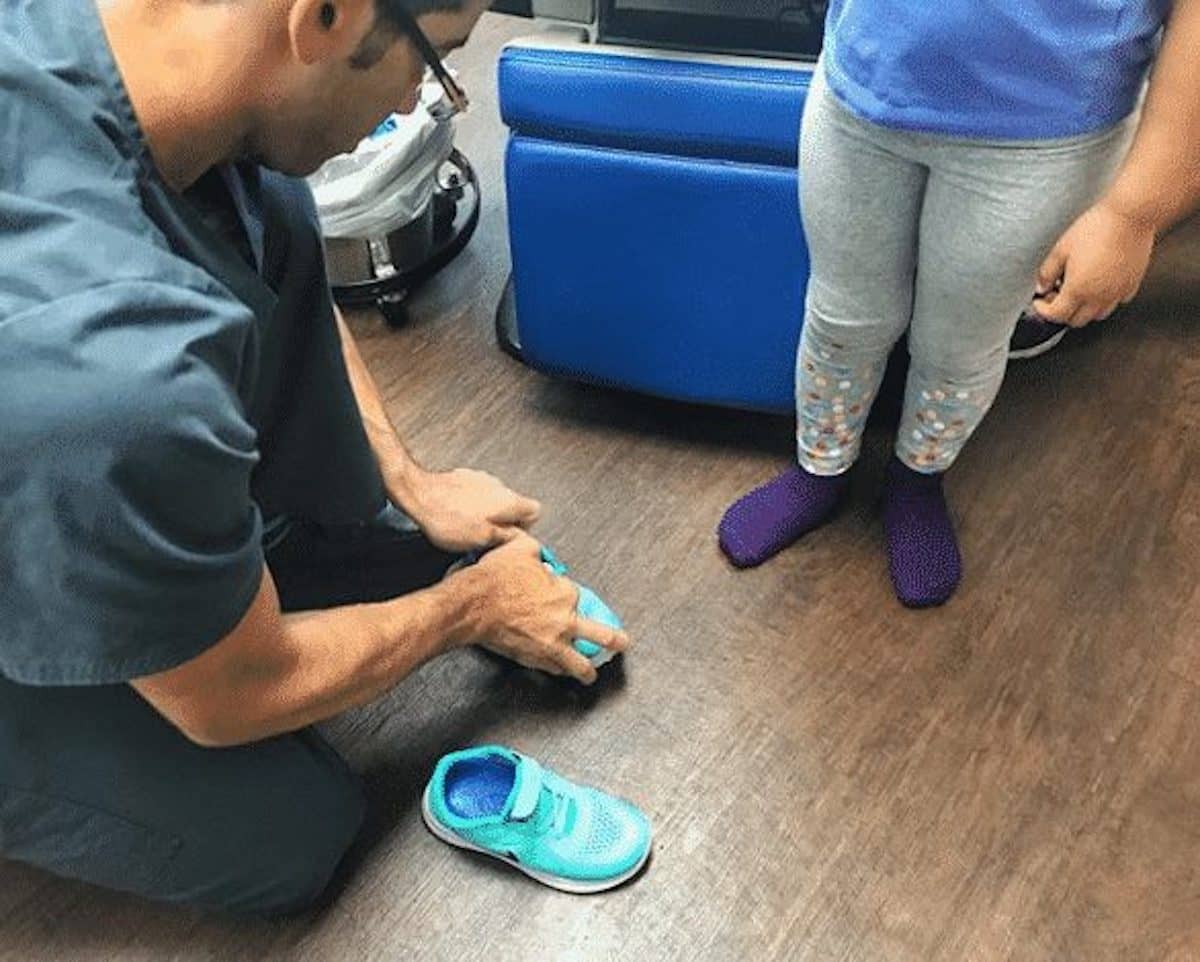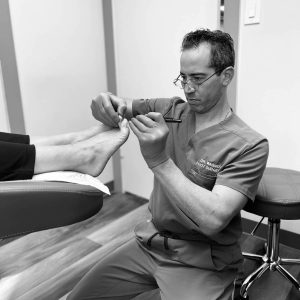
Each of our feet contains 26 bones, 33 joints, and a whole array of tendons, ligaments, and muscles.
That is a lot of moving parts – and a lot of things that can twist, break, become infected, or otherwise not work as they should.
When that happens, discomfort, pain, diminished mobility, and the potential for even more problems can make it necessary to seek professional treatment by an experienced podiatrist.
At JAWS Podiatry, we can resolve many foot and ankle issues through non-surgical treatments, including medication, lifestyle adjustments, or changes in footwear.

Recent advancements in technology and techniques also allow us to increasingly use minimally invasive foot and ankle surgery to address many problems.
Sometimes, however, a condition’s severity or failure to fully respond to other treatments may make foot and ankle surgery the only effective option to get the results that you want and need.
Just like other surgical procedures, foot and ankle surgery may be performed either in an inpatient or outpatient setting, involve the use of a local or general anesthetic, and take from a few hours to a few weeks of recovery time.
The Most Often Performed Foot and Ankle Surgeries
Some of the most common types of foot and ankle surgery we perform include:
- Bunion Surgery – This procedure involves removing or realigning the soft tissue and bone in the crooked joint that sticks out from the base of the big toe to bring the joint back into its proper alignment. The surgery may also include the insertion of small screws, plates, or wires to keep the bones in place after the procedure.
- Hammertoe Surgery – Changing footwear, using protective padding, and reducing calluses can often treat the contraction of joints in our lesser toes that lead to hammer toe. But if those efforts don’t work, your podiatrist may recommend arthroplasty, which involves removing the deformed joint between the toe bones to create needed flexibility. We may also decide to perform arthrodesis, in which we fuse the toe bones together to provide better stability.
- Heel Surgery – Plantar fasciitis can devolve into extremely painful heel spurs, which are calcium deposits that cause a bony protrusion on the underside of the heel bone. Ninety percent of the time, we can use non-invasive treatments like stretching, physical therapy, orthotics, regenerative procedures, and over-the-counter pain relievers to effectively address this condition. For more serious cases, surgery that usually involves making a tiny incision to partially cut the ligament in order to release tension can ultimately lower inflammation, relieve pain, and restore full mobility.
- Neuroma Surgery – The nerves between our toes can sometimes become painful and inflamed, either because of genetics or other factors such as improper footwear or excessive and sustained pressure. This surgery involves removing a benign enlargement of a nerve, typically between the metatarsal heads in the ball of the foot.
- Fusions – We can relieve painful arthritic conditions with a fusion procedure. We remove cartilage and any diseased bone, exposing the underlying bone on both sides of the affected joint. These joint surfaces are then compressed together to create the fusion. Some standard ankle fusion surgeries are done arthroscopically through a small incision, which takes between one and two hours.
Foot and Ankle Surgeries Are Our Speciality
These are just a few of the foot and ankle surgical procedures we perform at JAWS Podiatry.
We know that no one wants to have surgery if they don’t need to, so our foot and ankle specialists will explore all possible alternatives, including minimally invasive procedures before we recommend traditional surgery.
If surgery is necessary, our experienced podiatrists will perform your procedure with the utmost care and precision, using the most advanced technology and methods.
Please contact us today at (954) 922-7333 or send us a message to schedule a consultation.
- The Life-Changing Power of Cosmetic Foot Surgery - February 27, 2023
- What Are The Most Common Pediatric Foot Conditions? - October 5, 2020
- 4 Important Things To Know Before Having Foot Surgery - September 21, 2020



